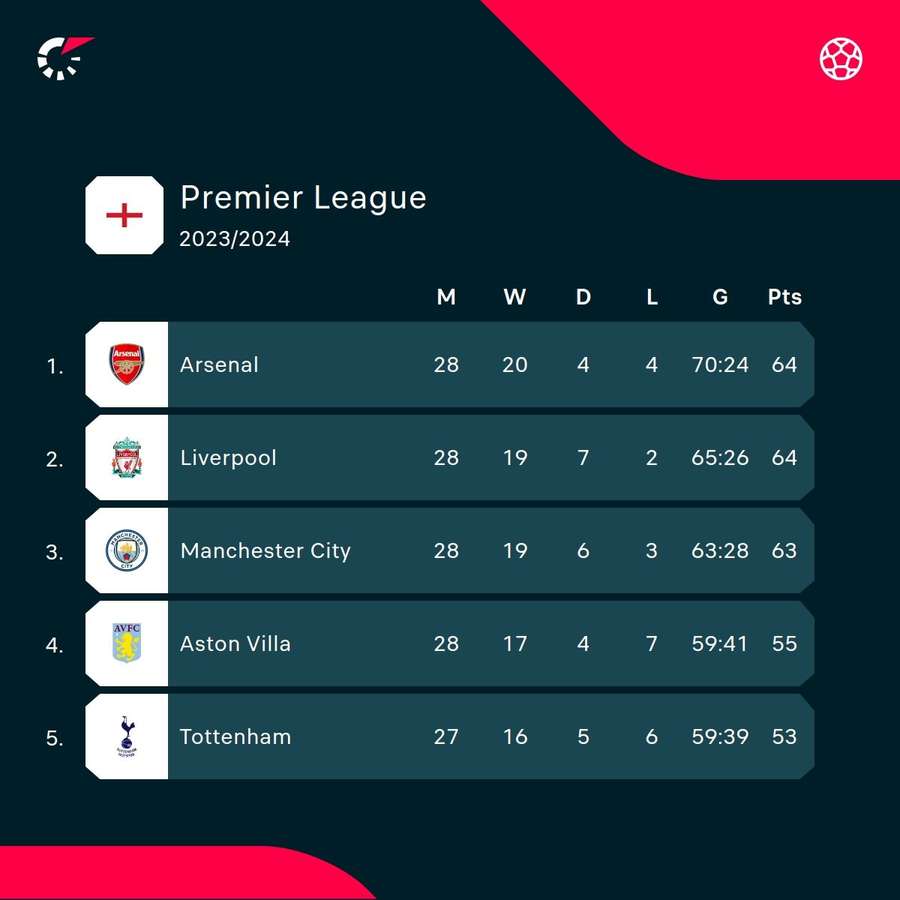The Regista: Energy inspires Liverpool's comeback against City
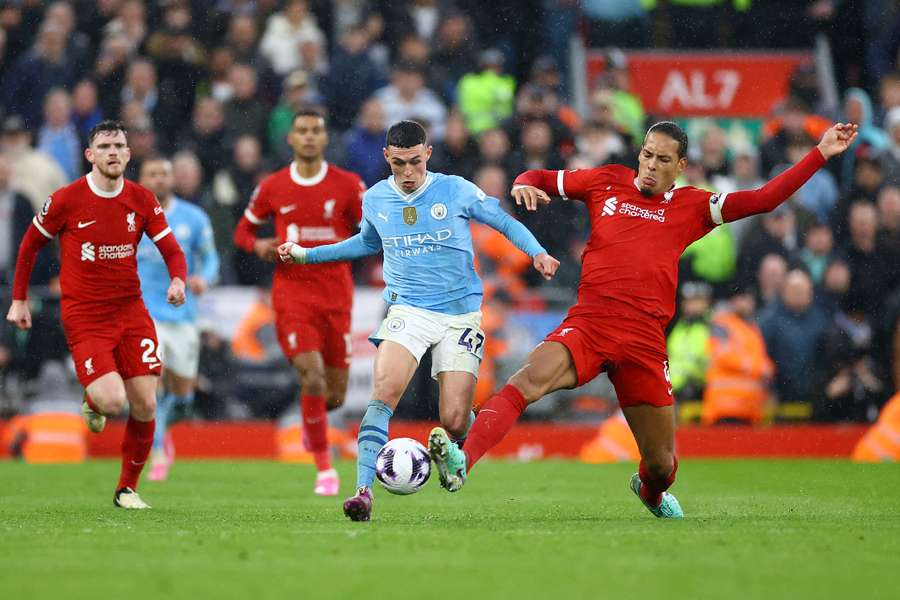
In a clash to move top of the Premier League table, a 1-1 draw left both sides behind first-place Arsenal, with just one point (and goal difference) now separating the three at the top of the tree.
With a clever set-piece routine, a Nathan Ake mistake, and a huge VAR decision in the dying embers of the game, this fixture didn't disappoint for the last iteration of Pep Guardiola vs Klopp in England.
But what did Liverpool do to regain control of this game after going 1-0 down and how did Klopp's Reds manage to pin City back? Let's take a closer look.
City's set-piece goal
Firstly let's just touch on City's set-piece routine that gave them a 1-0 lead in the first half.
As you can see from the image below, Ake was used as a blocker at the near post, stopping Alexis Mac Allister from getting to the front post to clear the ball.
From this, Kevin De Bruyne put a perfect ball in at the front post, where John Stones attacked, running across Ake's path and away from Darwin Nunez, to finish past Caoimhin Kelleher.

By scoring this goal, City had the ascendancy. This is usually a massive positive as scoring the first goal gives you control of the game state, allowing a possession-heavy side such as City to settle more on the ball, draw Liverpool further forward and attack spaces in behind.
But where I thought this would be City's time to take control, instead the first half faded out somewhat. Then, a mistake early in the second half from Ake, under-hitting a pass back to Ederson, caused the City keeper to give away a penalty. From this fortuitous point, Liverpool grew into the game.
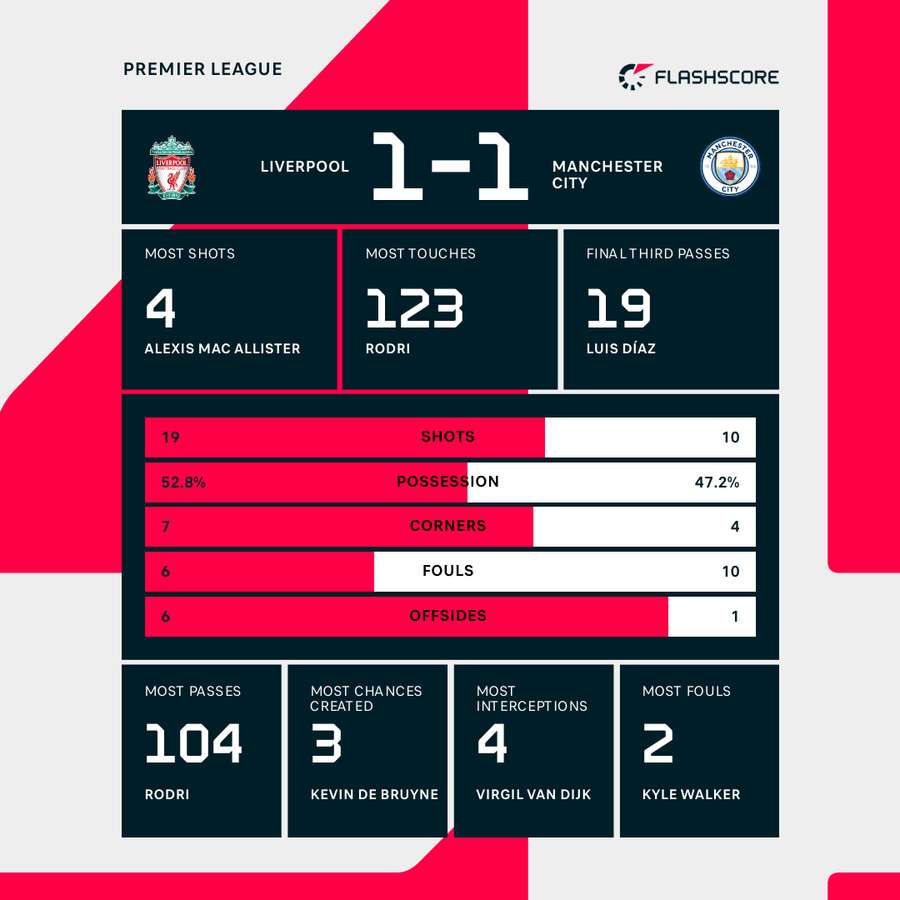
Energy and control
Early in the game (the first 20 minutes), City were managing to get both of their number 10s around Liverpool's Wataru Endo, receiving the ball and causing him issues with two-on-one overloads.
The spaces between the midfield three for Liverpool were too large, allowing the passing gates (space between two players e.g. Endo and Mac Allister) to be bigger, and easier to pass through and progress through the lines into the 10s.
Klopp looked to make changes after the first 20 minutes, noticing these spatial issues and the lack of control in midfield areas early on.
The change made was to minimise the distances between the midfield three, bringing the two wide players narrower, and looking to force City wide, stopping their central progression routes. This meant the passing gates were smaller and thus harder to pass through.
The athleticism of Liverpool made this even more effective, as they could cover the ground between the pivot of City and their 10s, choosing their points to press and recover the ball, then allowing them to break at pace (also thanks to their athleticism) and attack the spaces left behind/between the back three of City.
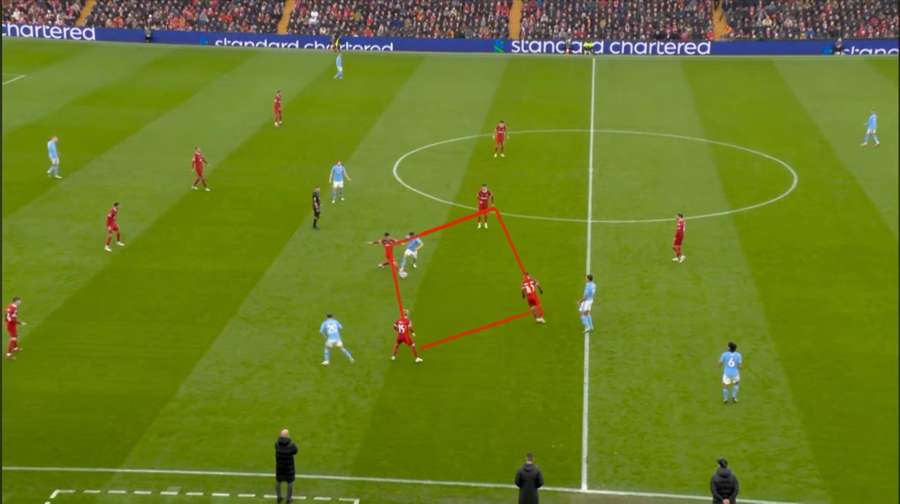
Here above is a perfect example of how the Liverpool midfield made things more compact, closing the passing gates into Bernardo Silva and De Bruyne, and then using this as their trigger to press the ball as the pivot players moved higher up (into their half).
This allows Endo to jump, win the ball back and Liverpool to break.
Dominik Szoboszlai (below) breaks with the ball in this example, giving it to Luis Diaz to go one-on-one with Kyle Walker, ending with him getting a shot on goal (saved).
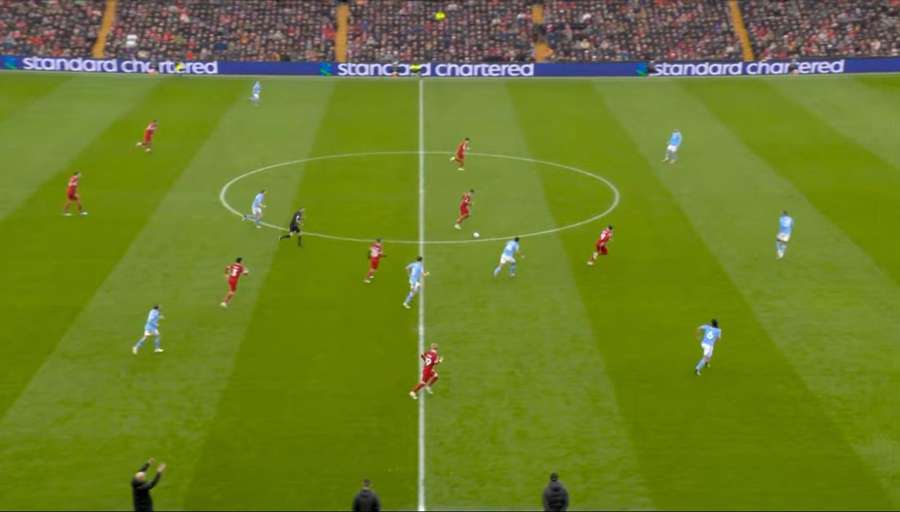
This was a common theme throughout the second half especially, as after Liverpool scored their goal their energy only increased, continuing to press City with perfect synergy between the players, keeping the lines tight and when they won the ball, breaking with purpose.
Anfield began to get louder, City's players started to get frustrated, and as the game wore on, Liverpool continued to grow in confidence, taking real control of the game (something you don't often see happen against Manchester City).
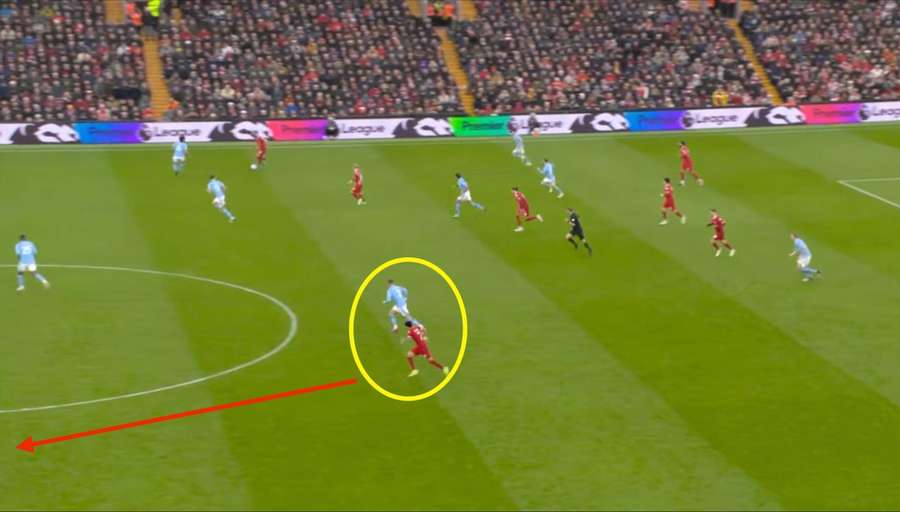
Above is another example later in the game, Liverpool breaking and finding the space behind Walker in the channel which ended in Diaz (circled in yellow) going one-on-one with Stefano Ortega (subbed on for Ederson who got injured) but putting his shot high and wide.
Box midfield vs 4-4-2 press
The last thing I want to touch on is the way Liverpool dominated central areas against City's 4-4-2 pressing structure.
City in their press/defensive structure went into a 4-4-2 with Stones stepping back from the pivot into the defence, and De Bruyne stepping forward to form a front two with Ering Haaland.
This left Rodri and Silva as the two central midfielders in this structure, and the box midfield of Liverpool formed of Endo, Mac Allister, Szoboszlai and the inverting Harvey Elliot allowed the Reds to assert their dominance.
Klopp's side often managed to overload that central area, using Elliot to drop in and provide that central overload, giving them the extra man in build-up to keep the ball.
The high positions of Conor Bradley from right back, and Diaz on the left wing stretched the pitch, causing the City wide men (Phil Foden and Julian Alvarez) to cover the passes into those two, meaning Liverpool's box midfield could dominate centrally.
Conclusion
To conclude, I thought City's opening 20 minutes were impressive, finding the overload between the lines and getting a set-piece goal to change the game-state, and give them control of the fixture.
However, what Liverpool did from that point impressed me even more, the key theme being energy. This was elevated by some tactical tweaks that allowed them to control the central areas, cut off City's central supply (De Bruyne and Silva) and then attack the space left behind.
Buckle in because this title race is going to be absolutely amazing!
